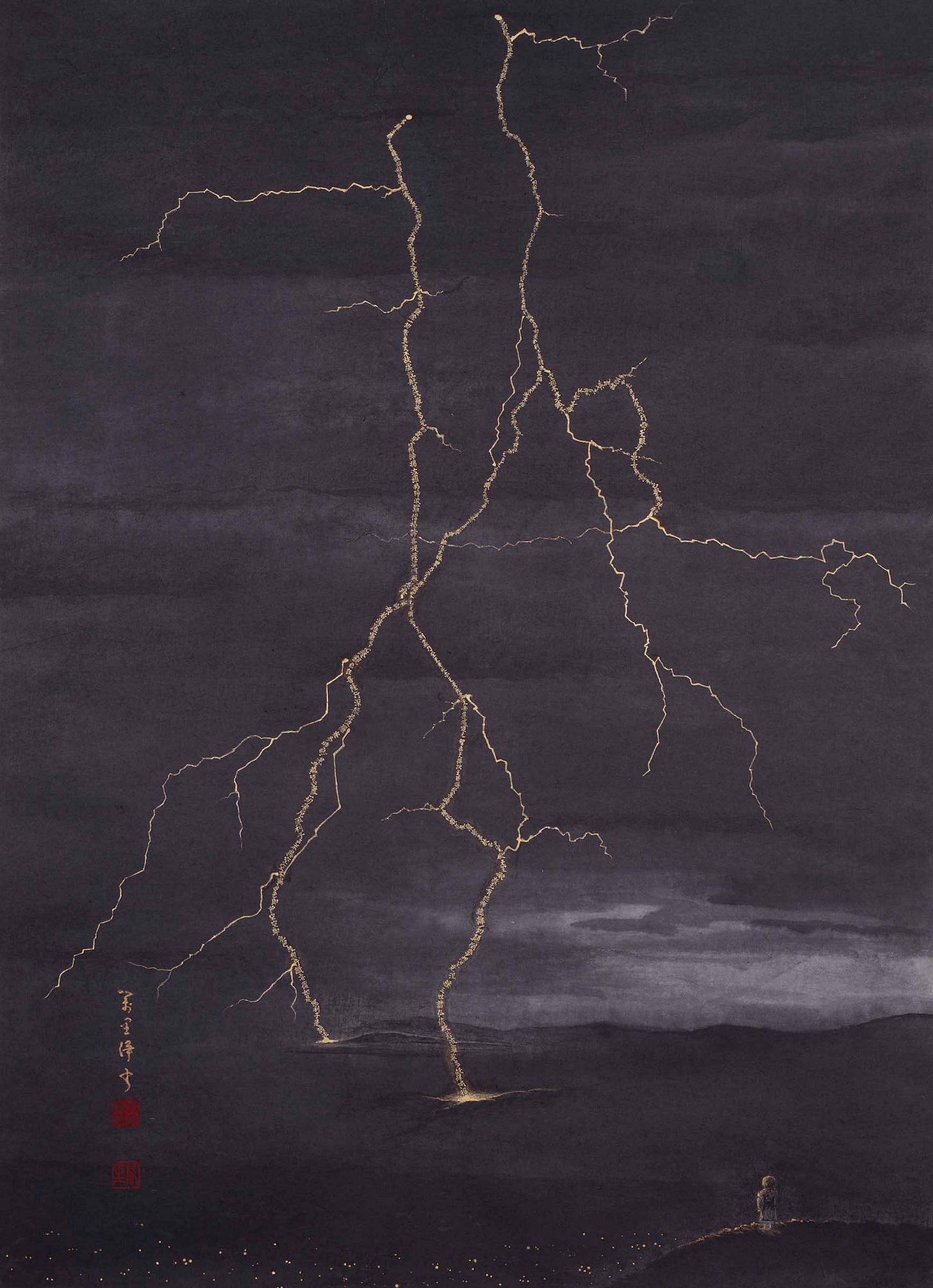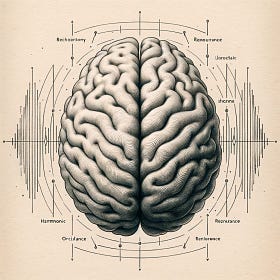Pivot Points
I'm making a podcast series about inflection points where meditation gets weird & I would like your help.
For those of you not in the mood to read much, here’s the juice. I’m working on a podcast series — titled “Pivot Points” — about the inflection experiences in meditation practice that transform a meditator’s sense of what’s possible with further practice. AKA “oh shit” moments.
I’m triangulating onto them by interviewing three groups of people: practitioners sharing first-person reports about what those pivot points feel like from the inside; the state of the science of pivot points; and teachers sharing what their traditions and experiences with students make of pivot points.
I’m looking to find practitioners willing to interview about their own pivot points for the series. I won’t be publishing our full conversations — just snippets, woven together into the story. Which is to say, these conversations don't need to be polished. We can just have a relaxed talk about the weirdest and most intense moments of your meditation practice. It'll be fun. If you’re interested, you can fill out this form.
I.
A paper published in Nature last year estimates that nearly 61 million Americans tried meditating in 2022. But I look around, and I do not see 61 million Buddhas1. That is, it doesn’t look like 18% of the US population has directly realized some luminous essence of mind, transiency of self, or emptiness of all phenomenon.
Most of meditation’s mainstream popularity is hitched to introductory versions of mindfulness, which leads to varieties of meditation experiences more or less like taking a long walk, or listening to relaxing music. It can feel nice! But these aren’t usually psychologically transformative experiences. Many people who start up a meditation practice get bored, burnt-out, or just find no compelling reason to keep meditating.
Every now and then, someone starts meditating and eventually reports back that their entire psychology has been transformed. Usually, though not always, for the better. But these reports hardly ever make sense to the rest of us. They ramble on about “emptiness,” “impermanence” or, god forbid, “awakening.” But their claims find no purchase in our non-meditatively-transformed minds, so they just bounce off, like hearing about someone’s dream.
It is as @bashu_thanks’ great tweet tells us: breakthroughs in deep meditation are like an English speaker learning how to think in Japanese, discovering it’s the most psychologically transformative, experience-enchanting thing they’ve ever done, and then trying to tell all their English-thinking friends how to do it…but they’re doing so in Japanese.
Across contemplative traditions, stages of more advanced practice often aren’t considered to begin until practitioners have already had some sort of experience that opens up their sense of what’s possible. Or, that at least gives them reason to have “faith” in the extent of what meditation can do.
“Faith,” in the Buddhist sutras, is the first of the five “spiritual faculties.” Theravada monk Bhikku Bodhi comments that for the development of insight, which he calls the direct road to awakening, “the faculty of faith provides the element of inspiration and aspiration which steers the mind away from the quagmire of doubt.”2
In Buddhist cultures, faith often came from exposure to a teacher, “generated by meeting with the holy being who imparts advice,” writes psychologist and Buddhist meditation teacher Dan Brown.
“What makes the meeting convincing is the actual presence of the spiritual being. Many Buddhist texts give accounts of unusual qualities and deeds of perfected masters.” Exposure to these teachers was the first pivot point, the first moment wherein people gained the motivation to stick with meditation practice.
“The result of such a meeting is called the certainty that generates belief…The meeting produces a definitive effect; something is generated within the mental continuum of the listener…The entire path toward enlightenment begins to ripen from this moment of interest generated during the auspicious meeting.”
Somewhere in the continuum from Buddhist cultures to secular Western modernity, this dynamic has largely fallen off. Western people still stumble upon teachers who blow open their minds. But faith in general, let alone in the transformative potentials of meditation practice, is not a defining characteristic of secular modernity. It’s kind of the opposite — we value empirically verifiable evidence.
These are what I mean by pivot points: inflection experiences in meditation practice that transform what we expect is possible with further practice.
I think these experiences are among the most interesting, and obscure, aspects of practice today. They’re what traffic between the surface of meditation and it’s stranger, more potent depths. And I think contributing to the public understanding of them — even just sharing various accounts that suggest they’re actually real, that these are things that can happen when you meditate, could be helpful to the ~60 million of us with a practice, and however many more who are curious about this whole endeavor.
So, as one does these days, I decided to make a podcast about them.
II.
The podcast, supported by the Waking Up meditation app, will be structured as a narrative told across 5 episodes. I’ll triangulate on pivot points by interviewing three groups of folks:
I’ll speak with meditation practitioners to hear first-person accounts of what their first pivot point felt like from the inside. The idea is to interview enough people that I can begin to spot patterns and themes running through them. (Note: taking psychedelics does not count. I am interesting in meditation-induced pivot points, not drug-induced ones. The latter seem comparatively far more accessible and well-documented than the former).
Next, as the study of advanced meditation is now becoming its own distinct field, I’ll interview scientists to report on what we know — and don’t — about the science of pivot points.
And last, I’ll check in with teachers to hear what deep experience and contemplative traditions make of pivot points.
This is a departure from my old podcast format, which was just publishing single long-form conversations with one person. I don’t think we’re lacking stories about one person’s transformative meditation experience. But there’s a sense of unreality that I get from reading a single report that’s so alien to my own experience.
The real interesting stuff, in my view, will arise from compiling 20, 30, 800 interviews about people’s pivot experiences, enough to find common patterns that might apply to pivot points in general, and help make them more tractable to the wider public.
What do pivot points tend to feel like? How far into people’s practice do they tend to occur? Do they change why people practice, or make it easier to stick with it? Are they brief and transient flashes of insight, or do they have leave permanent marks? Can we find them earlier in our practice if we try, or will treating them as a goal undermine the practice altogether? Do pivot points show up on an EEG or fMRI scan? And so on.
The practical motive for this email is to recruit participants for the practitioner interviews. So if you’re a meditator that’s had something like a pivot point experience, I’d love to talk.
Logistically, since the podcast is a narrative, I won’t be publishing our full recorded conversations. Just short clips from across all of them arranged into a hopefully coherent, maybe even compelling story.
Which is to say, as far as our interviews are concerned, they don’t need to be polished. We can just have a relaxed talk about the weirdest and most intense moments of your meditation practice. If you’re interested, you can fill out this very short form:
If you’d like to support the project but don’t want to interview on the record, or don’t feel it applies you, you can still help me beat The Algorithm that downplays links on Twitter by sharing the tweet, or sending the survey link (https://tally.so/r/wa1aPZ) to your secret meditation group chats and Discord groups.
All things permitting, I’ll share some of my favorite excerpts from the interviewing process here as things roll along. And if you have particular questions you’d like answered (or at least explored) about these “pivot points,” these great swings in our expectations of what meditation can do to these humble little human minds we have, let me know.
Remember, above all, that while we might “pull up swagless into this sauceless void” as Sam Kriss writes, and “Bro needs to consider that there is some lore to this world that bro will not be able to understand,” pivot points need not remain among that formless lore that haunts the swagless. The void itself is nothing but sauce. And if we won’t take that on faith, we might as well try to understand. Using, of course, those great vehicles of understanding: podcasts.
Previous dispatches:
Are minds made of wonder?
In her early 60s, my mother began fumbling her words a bit too often. Around Christmas of 2022, we all began to notice. Her sentences would stop short, and she’d look around, as if someone had swooped in and stolen the word she intended to use. Did anyone see where it went?
Resonance: a bridge from neuroscience to sociology
Hi, I’m Oshan. This newsletter explores topics around emancipatory social science, consciousness studies, & together, the worlds they may conjure. If you’re reading this but aren’t subscribed, you can join here:
Yeah, yeah, everyone is already a Buddha, etc. We are all one great big Buddha interacting with itself. But it is within you to know what I mean.
Another example: 15th century Tibetan Buddhist Tashi Namgyal, in his The Natural Condition of Thatness on Path-Walking in Five-Parts Mahamudra, explicitly addresses “those who…have had occasion to believe.”





This is one of the most lucid explorations of something few people know how to talk about—thank you. The framing of pivot points as inflection experiences that reorganize perception is spot on, especially when divorced from the psychedelic path. Meditation-induced rupture (or, perhaps more accurately, realignment) often moves too subtly or too absurdly to be mapped in language alone, which is why your triangulation approach feels promising.
From my experience guiding post-awakening integration, the moment isn’t always marked by clarity—it’s often marked by disorientation. The known dissolves, not always gently, and the deeper coherence only emerges once the old psychological scaffolding has been released. But yes, it’s real. And tracking the shape of it across multiple narratives might finally make it more accessible without flattening it into dogma.
I’ll be following this project closely. There’s real value in demystifying the weird without reducing it. Appreciate the rigor and play you’re bringing here.